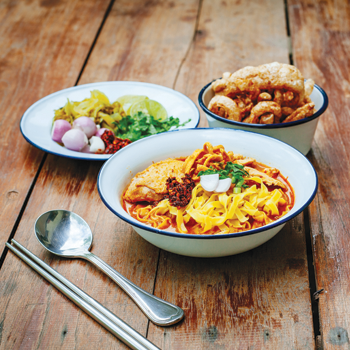สารก่อภูมิแพ้ – ความท้าทายในอุตสาหกรรมอาหาร
โดย: ศรีประไพ ปาจรียานนท์
Sriprapai Pajareeyanon
Food Division Manager
British Standards Institution (BSI)
การปนเปื้อนของสารก่อภูมิแพ้สามารถเกิดขึ้นในขั้นตอนใดก็ได้ของกระบวนการผลิตอาหาร ทั้งจากกระบวนการผลิตเบื้องต้น การขนส่ง การจัดเก็บ การผลิตและแปรรูป ไปจนถึงการบริการด้านอาหาร จากที่เคยกล่าวถึงในบทความเรื่อง “อาหารปลอม – มีอะไรบ้างที่เรายังไม่รู้?” การเติม หรือทนแทนสารอาหารที่มีราคาถูกกว่าเพื่อทำกำไรไม่ใช่เรื่องผิดปกติ โดยแค่อาหารปลอมก็สามารถทำลายความน่าเชื่อถือของสินค้าและแบรนด์จากลูกค้าและผู้บริโภคได้แล้ว แต่ยิ่งแย่ไปอีกเมื่ออาหารที่นำมาเติมทดแทนเป็นอาหารที่มีสารก่อภูมิแพ้ซึ่งอาจทำให้เกิดผลเสียที่ถึงแก่ชีวิต เช่น การพบถั่วลิสงในขมิ้นบดในสหรัฐอเมริกาและแคนาดา และการพบถั่วอัลมอนด์ในผงปาปริก้าและขมิ้นในสหราชอาณาจักร เดนมาร์ก สวีเดน และนอร์เวย์ โดยในขณะที่ต้นตอของการปนเปื้อนไม่ได้ถูกชี้แจง แต่สงสัยกันว่าผงถั่วบดน่าจะถูกใส่มาเพื่อเพิ่มน้ำหนักให้กับเครื่องเทศ ผลของการปนเปื้อนทำให้ผู้ผลิตมีการเรียกสินค้าหลายชนิดคืนทั้งในยุโรปและอเมริกาเหนือ
ความท้าทายในกระบวนการผลิตอาหารขั้นต้นมาจากความกดดันในการแข่งขันในตลาดโลกในการผลิตสินค้าที่มีคุณภาพสูงด้วยต้นทุนที่ต่ำที่สุดเท่าที่จะเป็นได้ โดยเกษตรกรเลือกปลูกพืชหมุนเวียน และเลือกใช้ระบบร่วมกันในการเก็บเกี่ยว เก็บรักษา และขนส่งผลิตภัณฑ์ทางการเกษตร ซึ่งทำให้เกิดการปนเปื้อนกันของสินค้าเกษตร เช่น การปนเปื้อนของซีเรียลที่มีกลูเตนและผลิตภัณฑ์ที่ไม่มีกลูเตน ขณะที่ในการเก็บรักษาสัตว์ทะเลเปลือกแข็งและกุ้งก็มีการเติมซัลไฟต์ลงไปเพื่อให้ผลิตภัณฑ์ดูสดใหม่ ซึ่งทำให้การพิจารณาตัวแปร การชี้แจงหรือระบุสภาพวันที่ผลิตเป็นอะไรที่ยากมาก และยังมีความเป็นไปได้ว่าสารซัลไฟต์อาจปนเปื้อนเกินมาตรฐานที่กำหนด หรือมาตรฐานที่ยอมรับได้ในการผลิตด้วย
Allergen contamination can occur at any stage of the food supply chain from primary production, transport, storage, manufacturing through to food service. As discussed in ‘Food Fraud: What you don’t know’, the addition or substitution of cheaper adulterants for economic gain is lucrative and therefore not uncommon. Just on its own food fraud can damage customer and consumer confidence in your products and brand, but when the substitution involves an allergenic substance it can also have deadly consequences. Undeclared peanut was found in ground cumin in the US and Canada, while undeclared almond was found in both paprika and ground cumin in the UK, Denmark, Sweden and Norway. While the cause of the contamination has not been positively identified, it’s suspected that cheap ground nutshells were added to ‘bulk up’ the spices. This contamination resulted in multiple recalls across Europe and North America.
Primary production challenges arise from competitive global market pressures to produce high-quality products at the lowest possible price. Farmers using rotational cropping and the widespread sharing of harvesting, storage and transport equipment between crops often inadvertently contribute to cross-contamination between cereals which contain gluten and those that don’t. Crustacea and prawns have sulphite added postharvest to preserve their fresh appearance. Given the variables within the process, validation is often difficult and there is the possibility that concentrations of sulphites may exceed the regulatory or specified acceptable limits.









